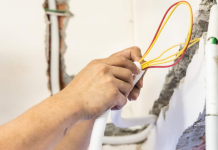HVAC systems have a behind-the-scenes hero that helps control the flow of air and temperature – damper actuators. You probably don’t think much about them, but these unsung workers are like the conductor of an orchestra, managing the intricate dance of heating, ventilation, and air conditioning.
In this article, let’s take a closer look at the damper actuators that help HVAC systems run smoothly. We’ll explore what they do, the different types available, and the benefits they bring to temperature control. Brands like Honeywell, Siemens, and Johnson Controls make reliable actuators that are the silent helpers orchestrating the magic of HVAC. Though they work discreetly, damper actuators play a crucial role in making buildings comfortable.
Table of Contents
Understanding Damper Actuators
A symphony relies on each instrument playing its important part to create a cohesive and harmonious composition. Similarly, in HVAC systems, damper actuators act like conductors, directing airflow and temperature to maintain comfort and efficiency. These clever devices control the motion of dampers, which regulate airflow within ventilation systems. If you’re adjusting the temperature in your office or circulating fresh air through a commercial building, damper actuators are crucial to making it happen. They’re at the core of managing airflow and temperature for optimal conditions.
Functions and Importance of Damper Actuators
Damper actuators are like the superheroes of HVAC systems. They have the power to control how much-conditioned air flows to different parts of a building. This ensures that each area gets just the right amount of air – not too much, not too little. Damper actuators are also critical for keeping indoor air fresh and healthy. They manage ventilation rates, so indoor spaces don’t get too stuffy or stale. That’s important for people’s well-being.
But wait, there’s more! Damper actuators made by companies like Honeywell also help regulate temperatures. By controlling damper positions, Honeywell damper actuators maintain comfortable, consistent temperatures throughout a building. That prevents cold drafts or hot spots that make people miserable. This balancing act not only keeps occupants happy but also significantly impacts energy use.
Types of Damper Actuators
Just like the instruments in an orchestra make their own special sounds, damper actuators come in different types to handle various HVAC situations. Electric actuators from companies like Honeywell use electric motors to adjust damper positions very precisely. Siemens damper actuators make innovative actuator designs, while Johnson Controls shows off the newest tech in their actuators.
Pneumatic and hydraulic actuators provide other options for different uses. Pneumatic ones use compressed air to move the dampers, hydraulic ones use fluid pressure. Each has upsides and downsides, from precision to maintenance needs. The right choice depends on what that specific HVAC system and building requires.
Benefits of Using Damper Actuators
Using damper actuators in HVAC systems does way more than just make things work better. The main perk is that they help use less energy. The actuators make sure air flows to the right spots at the right time. That means no wasted cooled or heated air, which cuts down on power use.
Having the right airflow also keeps the air inside healthier. The actuators prevent pollutants from building up, so the air stays cleaner. This matters a lot today when indoor air quality is a big concern.
Don’t forget comfort! The actuators keep temperatures and airflow steady. That means comfy conditions for the people in the building. When people are more comfortable, they can be more productive too.
Factors to Consider When Selecting Damper Actuators
Picking the right damper actuators takes some thought. You’ve got to think about things like the size and complexity of the HVAC system, the environment it’s in, and how much maintenance it’ll need. Brands like Johnson controls damper actuators have lots of actuator options to handle different needs.
It’s really important to work with pros who know damper actuators inside and out. Their know-how means the actuators you choose will fit perfectly into the HVAC system and work as well as possible. Their expertise makes all the difference.
Installation and Maintenance
Installing those damper actuators is a big deal – it’s gotta be done right if you want them to work properly. Getting them put in the right way means they’ll be able to direct airflow and control the temperature as they should. Don’t forget about maintenance too. That’s just as important to keep everything running smoothly.
You gotta inspect them regularly, lubricate them, and fix any issues that pop up before they get worse. The actuators might need calibration or adjustments over time too, just to make sure they keep working efficiently.
Innovations and Future Trends
The HVAC industry is always moving forward, and damper actuators are following suit. New innovations constantly change how these devices work. Connecting them to building automation systems lets you control everything from one central place and make real-time tweaks. Sensors and feedback mechanisms make the actuators more precise, so they can automatically adjust to changing conditions.
The future looks bright for even more energy efficiency and automation. With big players like Honeywell, Siemens, and Johnson Controls leading the way, damper actuators will likely see more innovations that completely transform HVAC systems.
Conclusion
Damper actuators are like the threads that tie together our comfortable indoor spaces. They work behind the scenes, making small adjustments to control the temperature, air quality, and efficiency of HVAC systems. Brands like Honeywell, Siemens, and Johnson Controls each contribute their own innovative actuator designs to create the environments where we live and work.
Though they often go unnoticed, damper actuators play an important role in creating comfortable indoor climates. As they quietly modify airflow, they help shape the perfect temperature and circulate fresh air where it’s needed most. So the next time you’re enjoying a nicely cooled or heated indoor space, take a moment to appreciate the damper actuators orchestrating that comfort from behind the scenes. They are the unsung heroes making modern climate control possible.
















